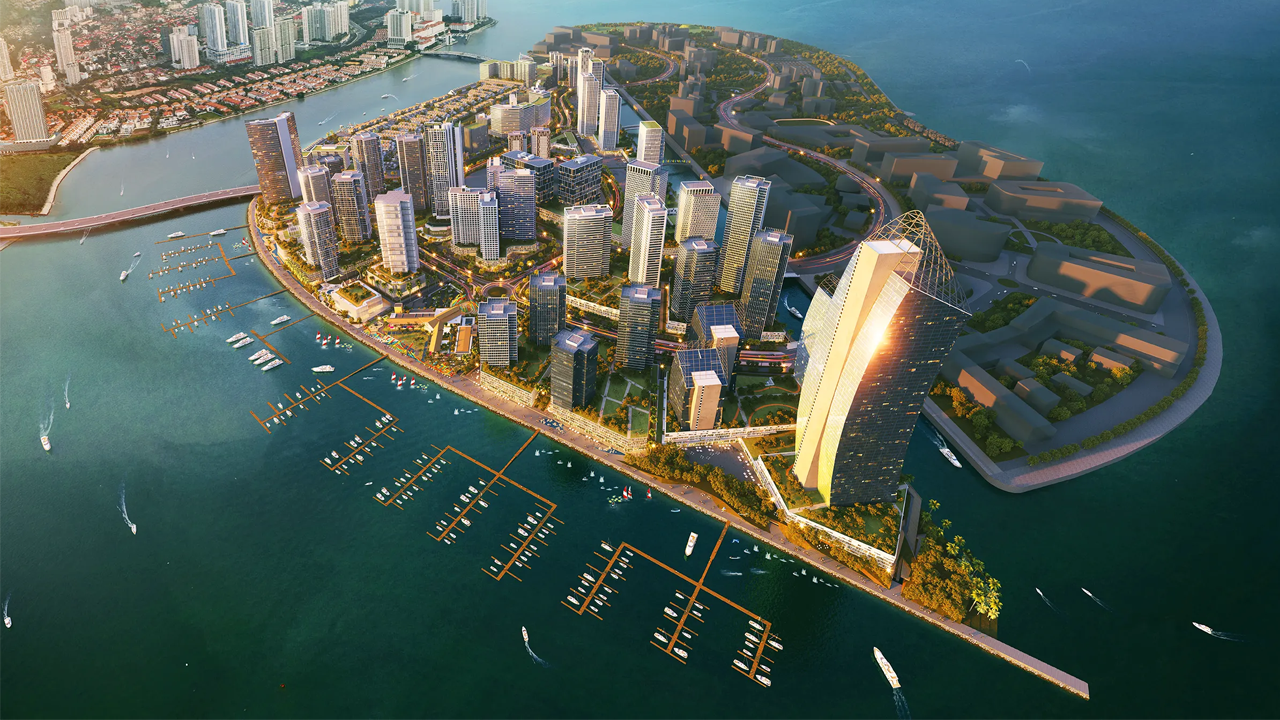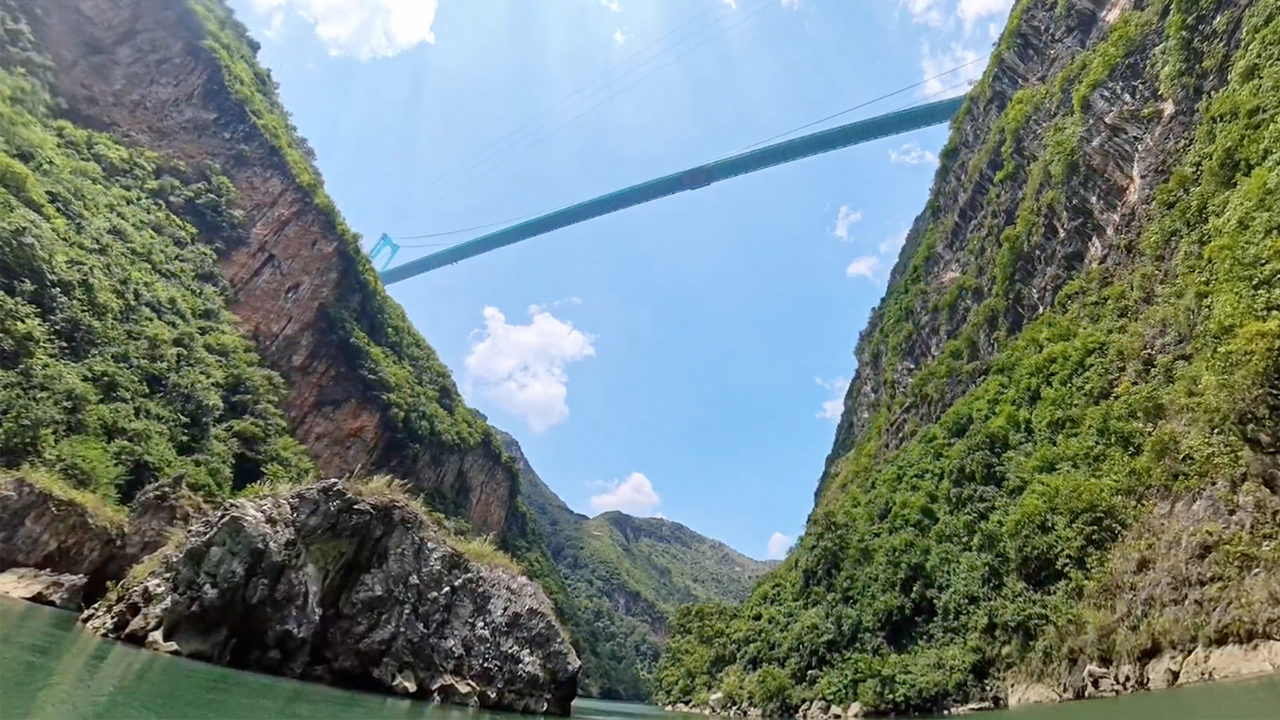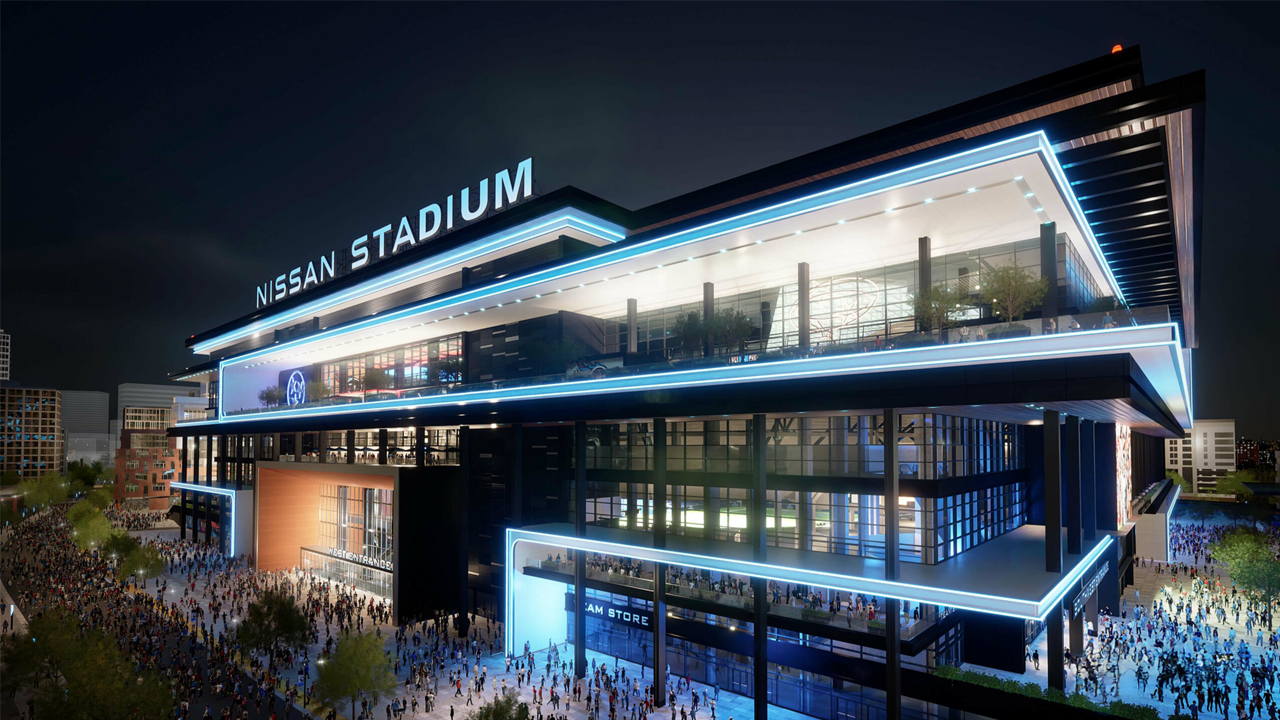Why America Built a Secret City Under Greenland
- Youtube Views 894,106 VIDEO VIEWS
Video hosted by Fred Mills. This video contains paid promotion for Outskill.
The year is 1959 and you’re a soldier living in an army barracks filled with around 200 people.
You have what appears to be a well-rounded life. There is a church, a hospital, and of course, your living quarters.
Every day you get up and you go to work at the plant. Your fellow co-workers are conducting all sorts of… experiments.
At first glance, there is nothing all that remarkable about it. But something is off…
For one, there isn’t any daylight. And it’s cold. Very cold.
The electricity that buzzes in the walls around you comes from a portable nuclear reactor. The water you drink is mined from a glacier.
This army barracks is entirely underground. In the middle of the Arctic.
What we’re about to explain to you was once highly classified and top secret… until now.
The true purpose of this city went far beyond housing.
To the outside world it was called Camp Century. But to the US military it was known as something else entirely.
Welcome to Project Iceworm. The atomic city carved under the ice.
No man’s land
There are some places on Earth mankind is just not meant to go.
The Arctic is without a doubt one of those places. Here in the very north of the northernmost country in the world temperatures reach as low as -50°C.
80% of the land is covered by an enormous ice sheet more than 3 kilometres thick.
In winter, the polar night can last weeks, or even months. Months of oppressive, icy darkness.
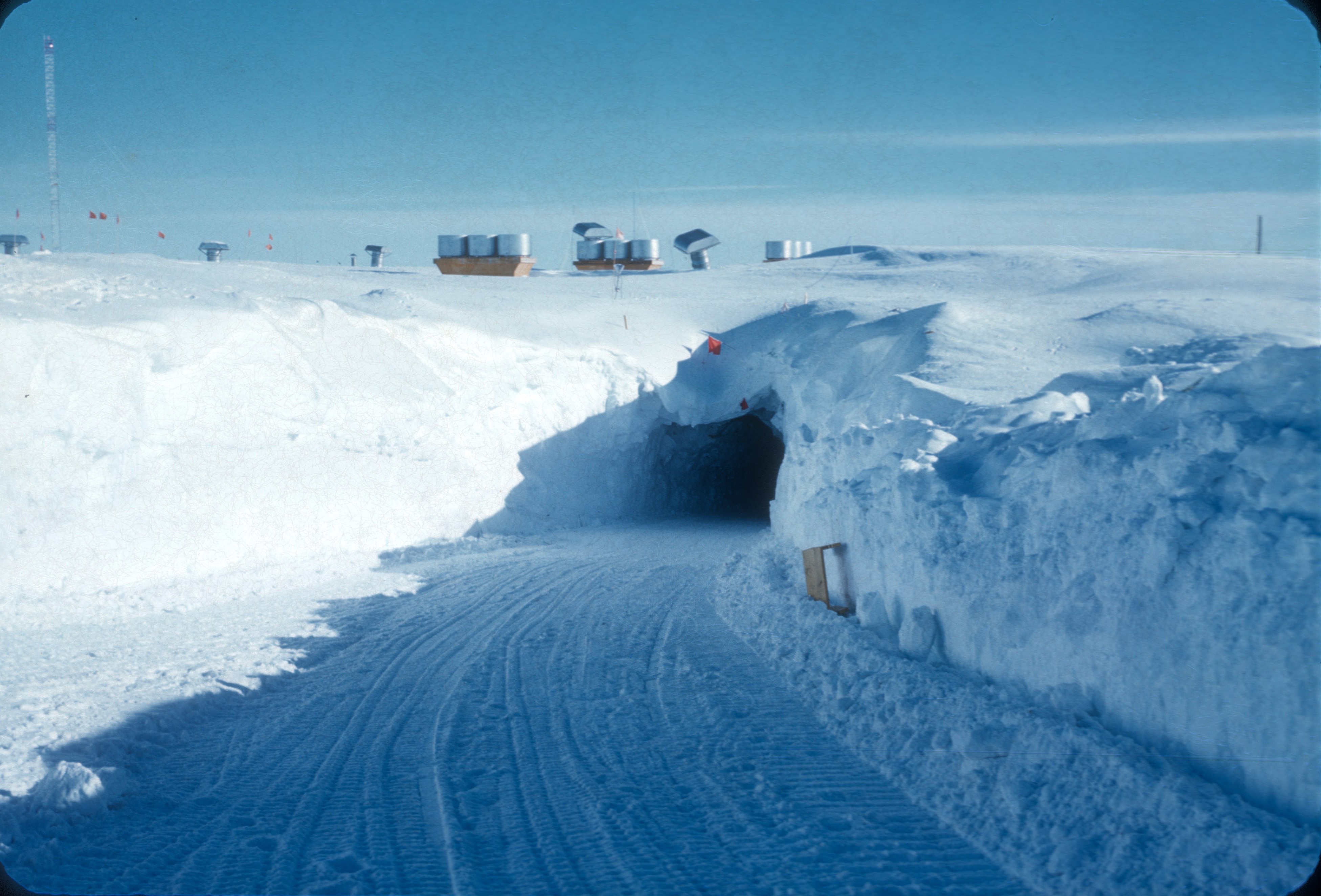
Above: The entrance to Camp Century. Courtesy of Robert Weiss.
There are often blizzards that hurtle across the region at 72 kilometres an hour. And don’t even get us started on “white-outs” - extreme blizzards that wipe away everything around you in a dense layer of fog, snow and wind until all you can see is white. Just white.
It was here, of all places, that America decided to build a city.
And that was just a starting point. A prototype. Camp Century was the beginning of what was supposed to be a whole region of cities and bases that would encompass an area three times the size of Denmark.
But why the hell would they build it here?
America has been fascinated with Greenland for a long while...
Why America wants Greenland
“The U.S. offered to buy Greenland in 1946 from Denmark. Because of its strategic significance, but Denmark declined at the time and said, we may owe a lot to the Americans, but I don't think we owe them the entire island of Greenland,” explained Kristian Hvidtfelt Nielsen to us.
You may even remember the country making a few small headlines in early 2025.
Greenland has always been geopolitically important. It sits almost directly in between the US and Russia. Two countries that have always had a rather tense relationship.
“Rather than buying a Greenland, there was an agreement between the U.S. And Denmark about the defense of Greenlands. They came into effect in 1951. And according to this agreement, the U.S. was allowed to have military bases in Greenland,” Nielsen said.
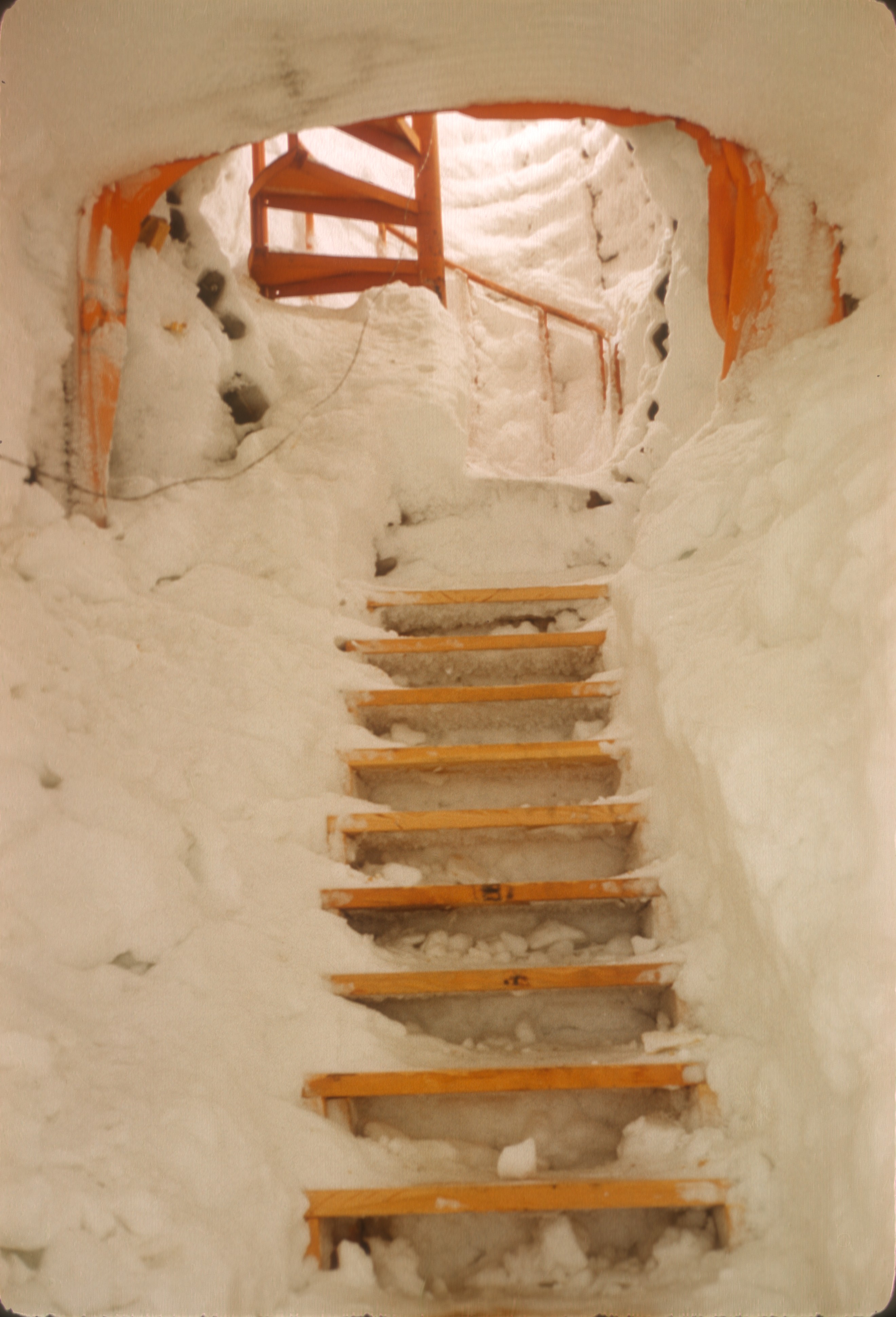
Above: The stairs to Camp Century. Courtesy of Robert Weiss.
In fact the US established Thule Air Base, a military installation here, all the way back in 1951.
Back when America was… great? Well, if not great then incredibly paranoid and willing to spend billions on it.
Housewives, rock and roll, Hollywood’s Golden Age… and the Cold War.
The 1950s saw incredible economic prosperity in a post war boom.
America emerged as a superpower and the country had cash to burn.
On the other side of the world the USSR presented an alternative vision to America’s kitsch and capitalism. There was rapid industrialization and urbanization, and the start of the Space Race.
It was this little noise that pushed the Americans into building Camp Century.
These beeps changed human civilization forever.
They came, of course, from Sputnik. The first human-made object to orbit the Earth.
All over America, anyone with a shortwave radio receiver could tune in and hear those beeps coming from a satellite high above them.
Naturally the American military worried the Soviet Union would attach missiles to it.
This fear drove the Army to put together a proposal for a new kind of base. A city under the ice in the Arctic, close to the Soviets. This project would go further than the already existing Thule Air Base. Further than anything built before.
“First of all, this was during the beginning, the earliest days of the Cold War, and the United States were enacting the so-called Polar Arctic Strategy,” adds Nielsen.
To the rest of the world it was presented as Camp Century. A research station in one of the most remote locations on Earth.
America was so great, it could build anywhere, it could make even the harshest environment hospitable. At least, that’s what they told the press.
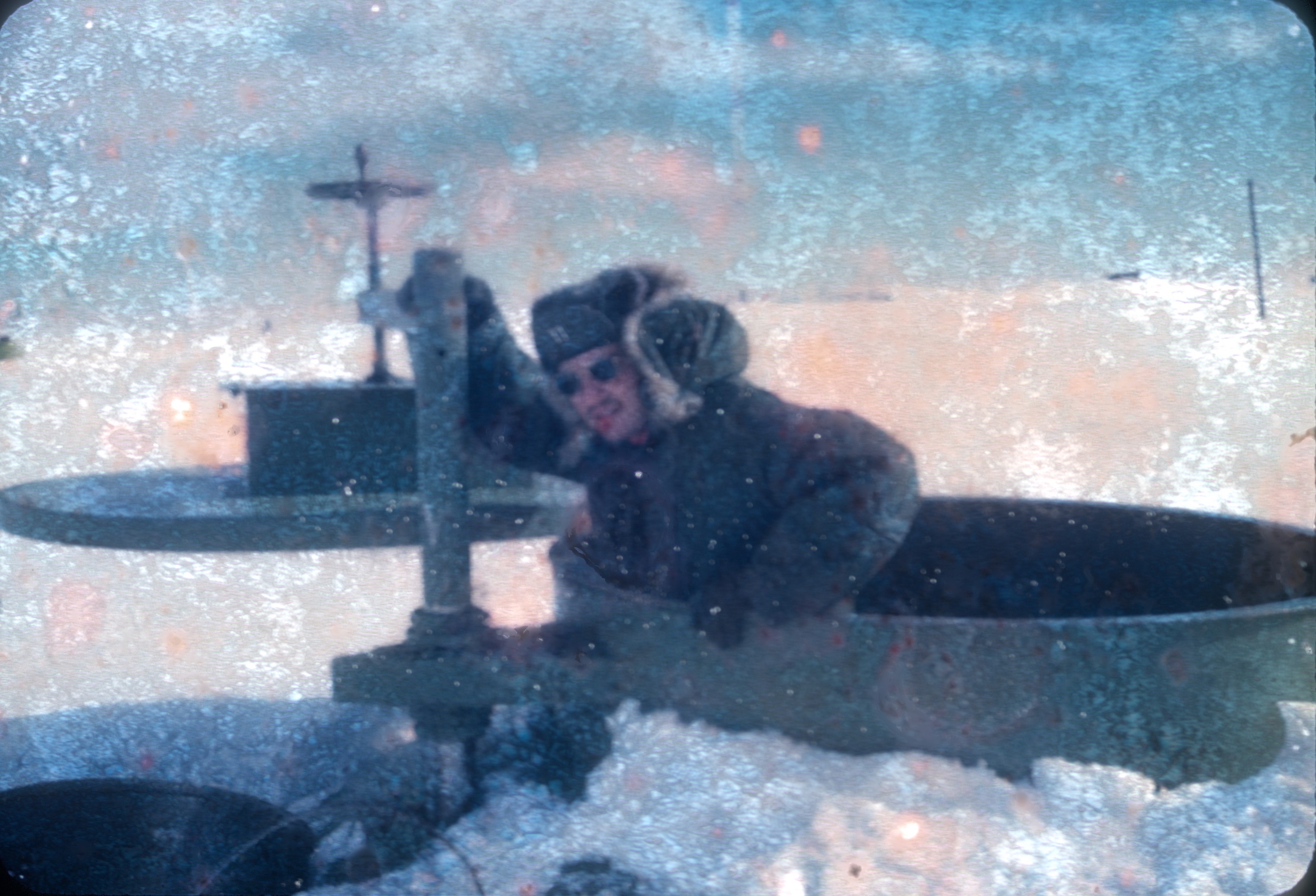
Above: Soldiers at work in Camp Century. Courtesy of Robert Weiss.

Indeed, they even invited journalists from magazines like National Geographic to tour the labyrinth of tunnels and underground buildings.
“Camp Century was not a secret at all, in contrast. It was kind of a publicity stunt, if you like, from the U.S. Army, who presented it as a sort of an exciting adventure into construction work in the Arctic.”
Even within the army itself its true purpose was strictly on a need to know basis, kept from most of the soldiers stationed there.
We spoke to Robert Weiss, a physician who was based at Camp Century in 1963.
“I didn't realize I was going to go to Greenland,” Robert Weiss told us.
“I remember going to meet the colonel the first time.
“He said to me, within a week... You will be going flying to Camp Century Greenland, 800 miles from the North Pole. And I looked at him, I said, you're kidding.”
A city with a secret
The army claimed this bizarre place was to be used to study glaciology, the climate, and human survival in extreme cold.
“There were these so-called defense areas, which included Thule Air Base and other air stations in Greenland, where the Americans were essentially allowed to do whatever they they wanted to, but if they wanted to operate outside these defense areas, they had to ask Denmark for permission. And this was the case with Camp Century,” said Nielsen.
“When the US asked for permission to build Camp Century, I think it was in the late 1950s, they were not too open about the real purpose.
“They simply mentioned that they wanted to try out this new so-called subservice concept. That's what they called it, the subservice concepts.”
Now, decades later. Those files have been declassified and we can share with you its true purpose: Project Iceworm.
It was to house more than 600 nuclear missiles in a vast tunnel network three times the size of Denmark.
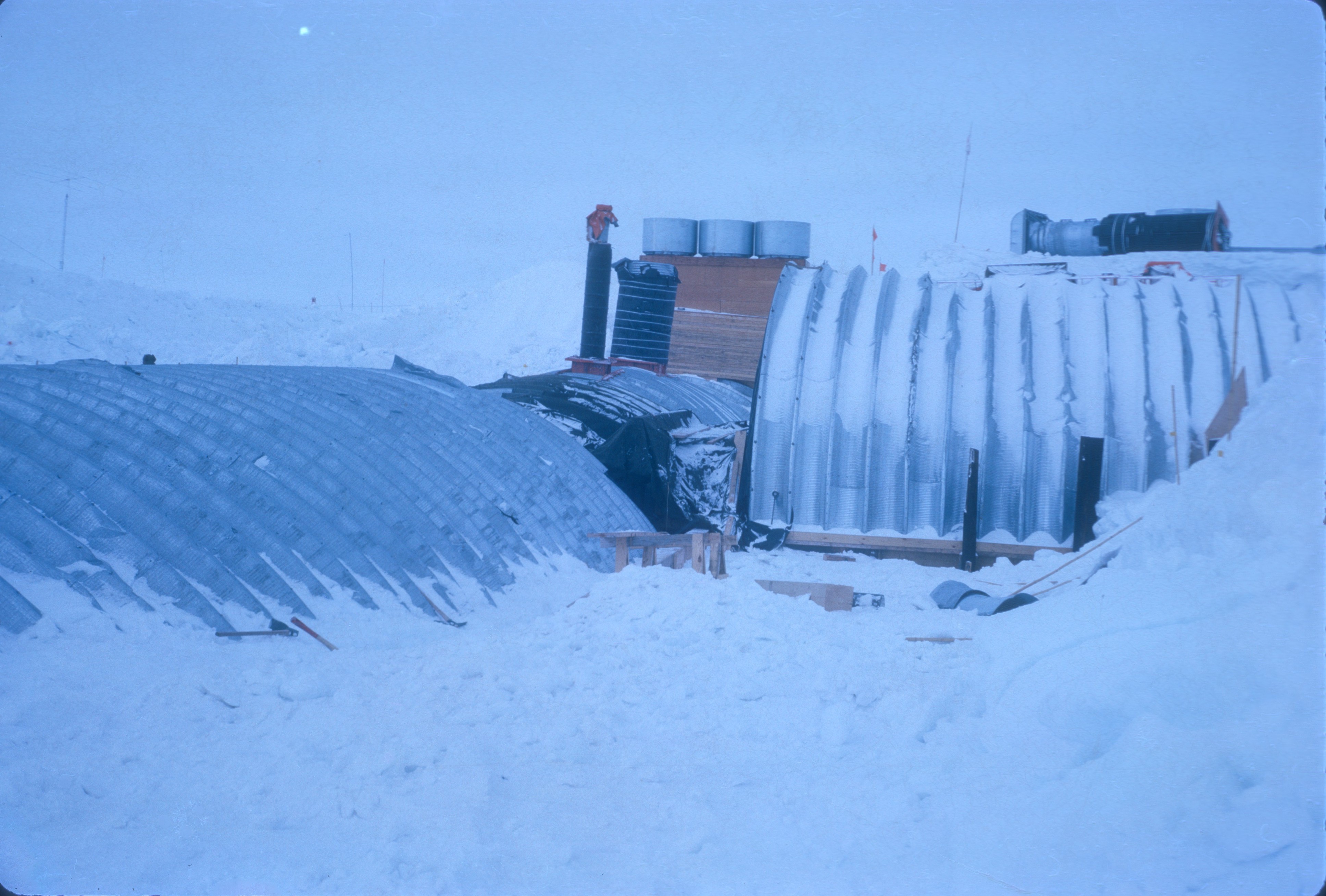
Above: Camp Century against the harshness of the Arctic. Courtesy of Robert Weiss.
These missiles would be mobile and hidden beneath the ice, making them hard for the Soviet Union to detect or destroy in a first strike.
There is some evidence to suggest the Danes were at least aware of these missiles.
“I think the Danish Government realized, this is going to happen whether we like it or not. So the strategy from the Danish Government was really to downplay the military significance,” said Nielsen.
It was a wild idea. It’s even more wild how close the Americans came to actually completing it. Because building anything here at all is next to impossible.
“Camp Century was the first permanent base under glacial ice anywhere in the world,” said Nielsen.
“I was told that was and that they were going to build a subway. I did not know about Project Ice Worm. I did not know any plans to put nuclear missiles in there. All I knew is that one of the basic reasons for the camp was, could people live out in this type of environment?” said Weiss.
“Most of it was white, and it would be snow. You wouldn't see a mountain or anything else like that.
“Most of it was just barren snow. Just barren snow.”
How to build Camp Century
You may notice there are no hardware stores here. There are no shops. No highways. No airports. Every single thing has to be shipped from miles away to Thule Air Base. A treacherous journey in itself across icy, unpredictable seas.
Thule was also only accessible during the brief summer window when Arctic sea ice receded enough for ships to dock.
The location for Project Iceworm is here 204 kilometres away. That’s like going from New York to Philadelphia, and you’d still have a quarter of the journey left to go.
Food, fuel, and equipment all had to be dragged on sleds in conveys.
In good weather, it would take several hours, in bad weather, which was frequent, it would take days.
“They used the heavy swings, which refers to a kind of a system of tractor pull, sled trains, which were used to transport materials and equipment, but also personnel to Camp Century. And these heavy swings were quite slow. They took them about three or maybe sometimes four days to cover the entire Camp Century trail,” said Nielsen.
A temporary over-snow supply route, known as the ice cap trail, was prepared and maintained between Thule and Camp Century.
Engineers had to deal with crevasses, extreme cold, and constantly shifting ice.
And at the end of that enormous journey, they would be here. Ostensibly the middle of nowhere.
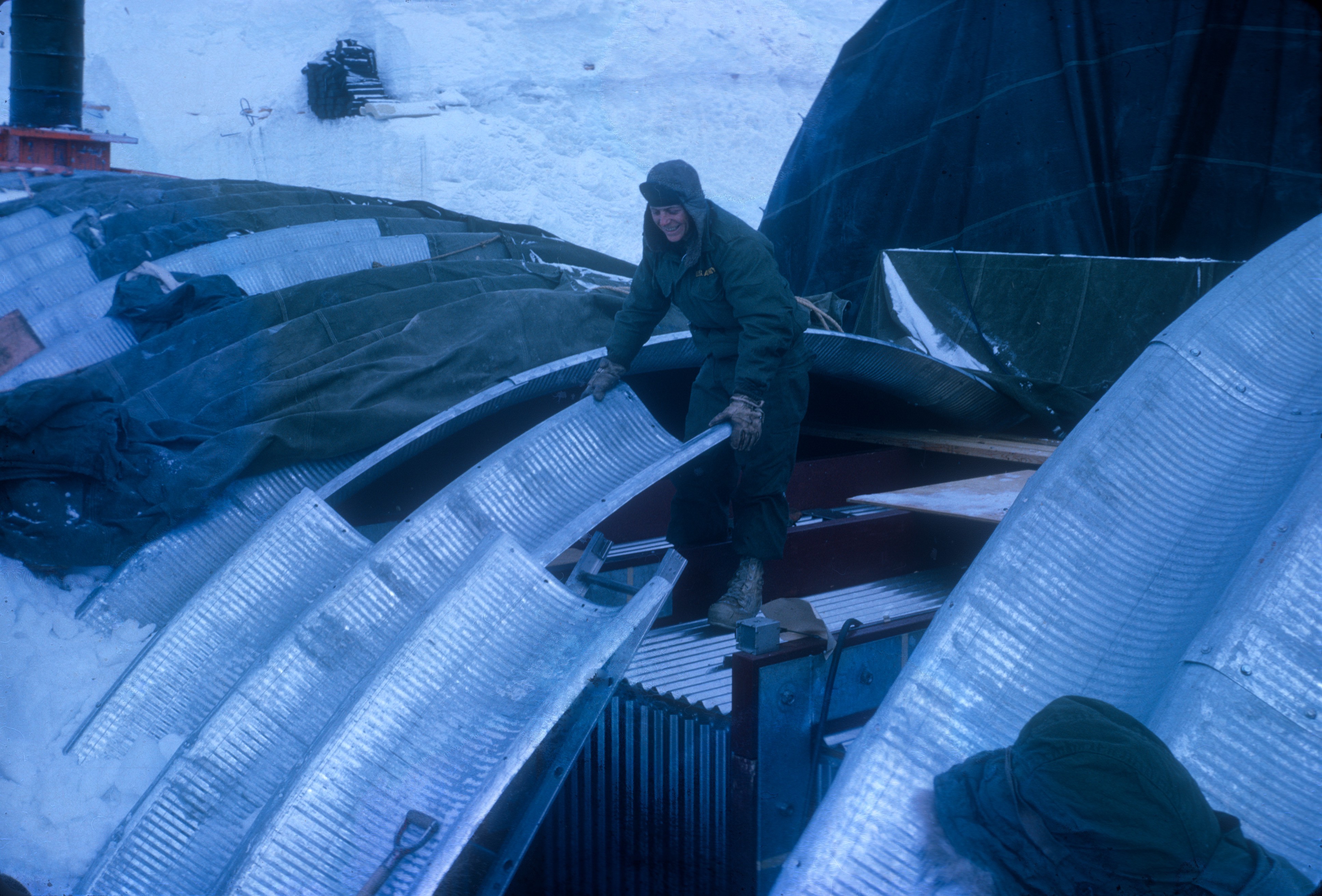
Above: Building Camp Century. Courtesy of Robert Weiss.
But before anything could be built, first the tunnels had to be dug.
“So construction of Camp Century took place over two summers of 1959 and 1960. And because of the weather, they had to work quite fast to do all the tunnels, they were essentially working 24 hours a day in three shifts,” said Nielsen.
Engineers used a “cut-and-cover” method to carve them under the snow.
First, large trenches were dug using Swiss-made snow milling machines called Peter Plows.
Originally designed for clearing roads in the Swiss Alps, these incredible machines could move up to 594 cubic metres of snow an hour.
The snow would be pushed out of the tunnels where it would condense. Ploughed snow has a greater density and weight than regular snow.
Plowing compacts the snow, pushing the individual snowflakes closer together and reducing the air pockets that naturally exist in loose, fluffy snow.
This is perfect for construction.
Curved metal sheets would then be placed above like this and snow would be piled on top, hiding the tunnels beneath.
Prefabricated structures were then assembled and placed in the tunnels on stilts. This reduced heat transfer and kept the interiors warm.
It would take about a day for the construction crew to erect each building.
Piece by piece, an entire town was built this way. Tunnels were bored into the ice, there was a main street off which living quarters, latrines, generators, mess halls and more came off.
“These were known as T5 barracks. So this was a standard US Army barrack in size,” explained Nielsen.
“There were the different buildings and each one was separate,” added Weiss.
There was an incredible amount of cutting edge engineering just to keep this place liveable.
“The main challenge in camp century was not keeping warm, but it was actually keeping cold, which is a bit surprising when you're living inside the ice sheet,” said Nielsen.
A ventilation system sucked in cold surface air and blew it through the tunnels and out to the surface. Tunnel air had to be kept at -15°C otherwise everything would melt.
“Then they found out that that was actually a huge problem because when you have machines operating and men working and the doors going up and down to heated buildings. You know, there's going to be a lot of heat inside the tunnels and the heat was hard to get rid of or it was hard for them to get it out. So they had to, they didn't prepare for this, but they had to build sort of huge ventilator systems that would ventilate the tunnels in order to take out the heat.
“And the problem with the heat is you can imagine that the ice is becoming slushy and it's harder to walk or drive inside the tunnels, but it also made the tunnels more unstable.”
To avoid the nearly impossible challenge of supplying a steady supply of diesel fuel for a generator, power was provided by a portable nuclear reactor. The first of its kind, but not the last.
There were eight of these developed by the US Army in a program to discover how to power remote locations.
“It was about 1.5 megawatts in power, and it was modular, which means that it could essentially be transported to the base in smaller pieces, and then it could be constructed at the base.
“It was essentially the idea that you could provide energy independence in extreme or remote environments.
“They considered two options. They considered the diesel generator option, but that would require a lot of diesel that needed fuel that needed to be transported to the base, but the nuclear reactor required much less Uranium fuel.
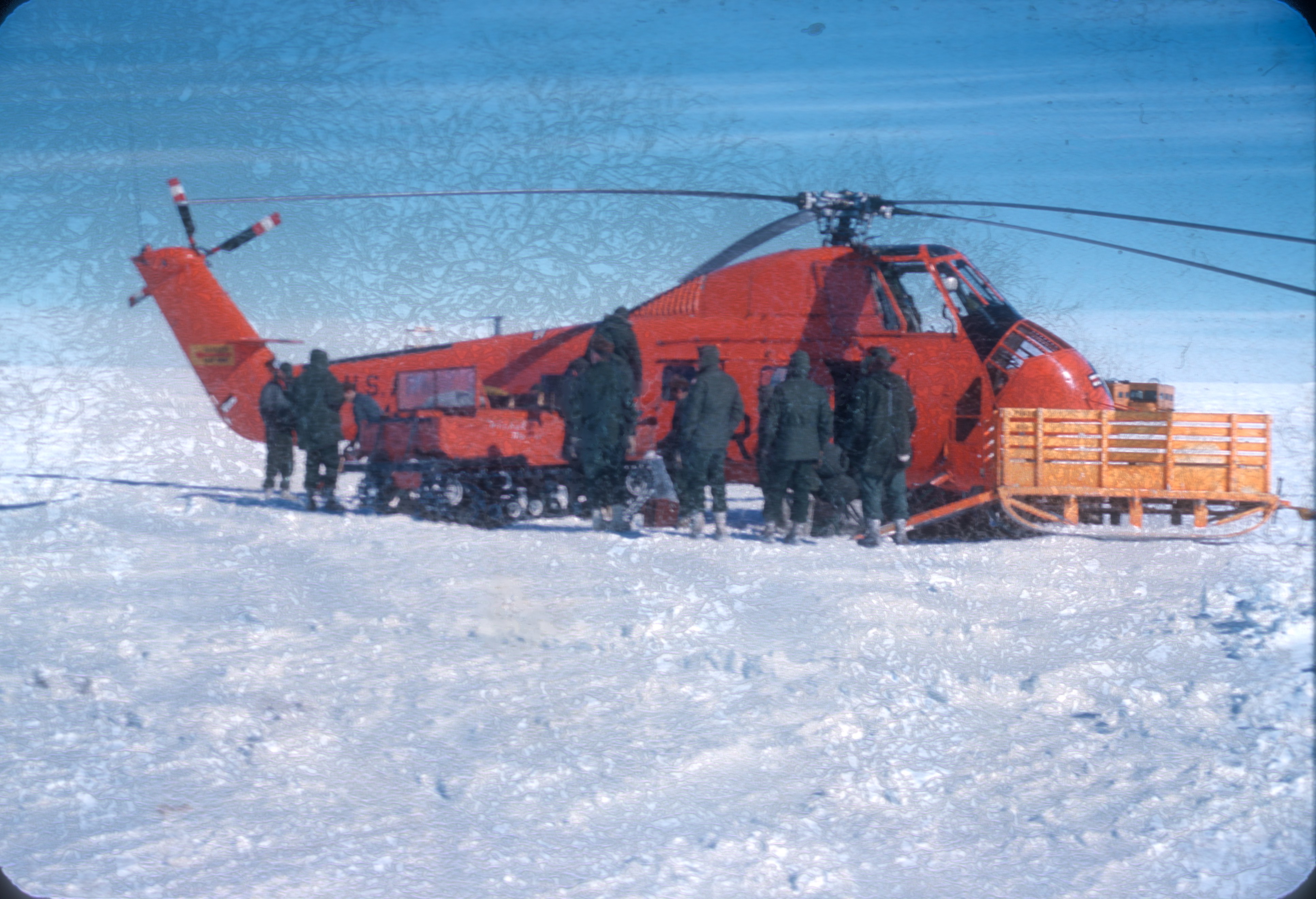
Above: Some supplies were airlifted in from the nearby Thule Base. Courtesy of Robert Weiss.
“It was the first nuclear reactor on Danish soil and it actually caused a bit of a problem in the Danish government because there was no regulations or no idea on how to control or even to think about responsibility in case of an accident.”
Most unsettling of all was how the camp got its water.
It was actually an ingenious solution developed by the base’s engineer Raul Rodriguez.
A hole was dug 150 metres deep - that’s the height of an ordinary skyscraper - and a heated element was dropped into the ice. It would melt the water around it and create a reservoir with more than 37,000 litres of drinkable water.
To stave off boredom in the camp, the men would take turns dropping themselves down the well for the thrill. Hanging in the enormous dark carven… in complete darkness.
And boy was boredom an issue. Despite all the luxuries of home there wasn’t that much to do on the camp and the isolation could get to people.
Living under the ice
“I learned to like that type of life,” Weiss told us.
“As a physician, I had probably less work to do than the officers who were really working. Surely less than the enlisted men who were doing the hard work of drilling, building things out on the snow cap.
“But I had time. To play bridge at night, to play chess periodically.
“I woke up in the morning, I would quote Voltaire, and this is the best of all possible worlds. And I would always remember that, and that was it. So I think you keep yourself busy.
“We would say never have so many gotten up so early to do so little for so long. That was that was what the officers would say to each other.
“The officer's quarter, there must have been rooms for about six or eight of us.
“The officer quarter would have be divided into rooms with just hanging blankets. That's all.
“You had an officer's club every evening they were kitchens. The food was excellent.
“The only thing that was short was they were short on fresh vegetables. A watermelon would be a luxury and a rarity in Camp Century.”
Everybody had their job. The site functioned effectively as a little town.

Above: One of the tunnels of Camp Century. Courtesy of Robert Weiss.
While the base was a secret pilot program for nuclear missiles, it was also a psychological experiment. The army needed to see if these men could actually live in this ice town, so far from civilization, without falling to pieces.
The US government was especially interested to see how they would fare in extreme isolation… as they were preparing to send the first men into space.
“If you could operate in these very difficult and harsh environments on the ice sheet, then why couldn't you also have a base on the moon?” said Nielsen.
“There were also more extreme psychological experiments going on in terms of hunger experiments where they, the men, you know, semi voluntarily, I guess, were, didn't have a lot, a lot to eat for. Several days at the time, and they were trying to find out how that would also affect the personnel in Camp Century.
“It was kind of to show the American bravery and these men endured on the extreme.”
To all extents and purposes, these psychological tests were actually successful.
“There were no fights or revolts or anything going on.
“They did live there in a peaceful manner and an orderly manner.
“They did conclude that it was feasible. The Camp Century concept was a feasible concept.”
If the entire project had been as successful as the psychological experiments more tunnels would have been created. Borrowing outwards for hundreds of miles. Rail tracks would have been laid and, yes, more than 600 missile silos readied.
But it wasn’t successful.
The end of Project Iceworm
Engineer Raul Rodriguez, while brilliant, failed to take into account how quickly the ice sheet around the base would move.
Soldiers were constantly roaming the tunnels with chainsaws, keeping the ice at bay, but it was no use.
Over time, the ice deformed and shifted, causing tunnels to warp, collapse, and become structurally unsafe.
This was no place for an atomic reactor, let alone 600 missiles.
The reactor was put offline in 1963 and three years later the base was abandoned.
By 1969 it was a total ruin, steel structures had collapsed in on themselves, wood beams had splintered. Soon the ice had reclaimed nearly everything.
As Cold War military technology evolved, other systems - like submarine-launched ballistic missiles and ICBMs - made Project Iceworm obsolete.
But at the end of the day maintaining Camp Century became too expensive for its limited scientific and military returns. The U.S. Army deemed it not cost-effective to keep repairing tunnels and supplying personnel.
And that could have been the end of the story.
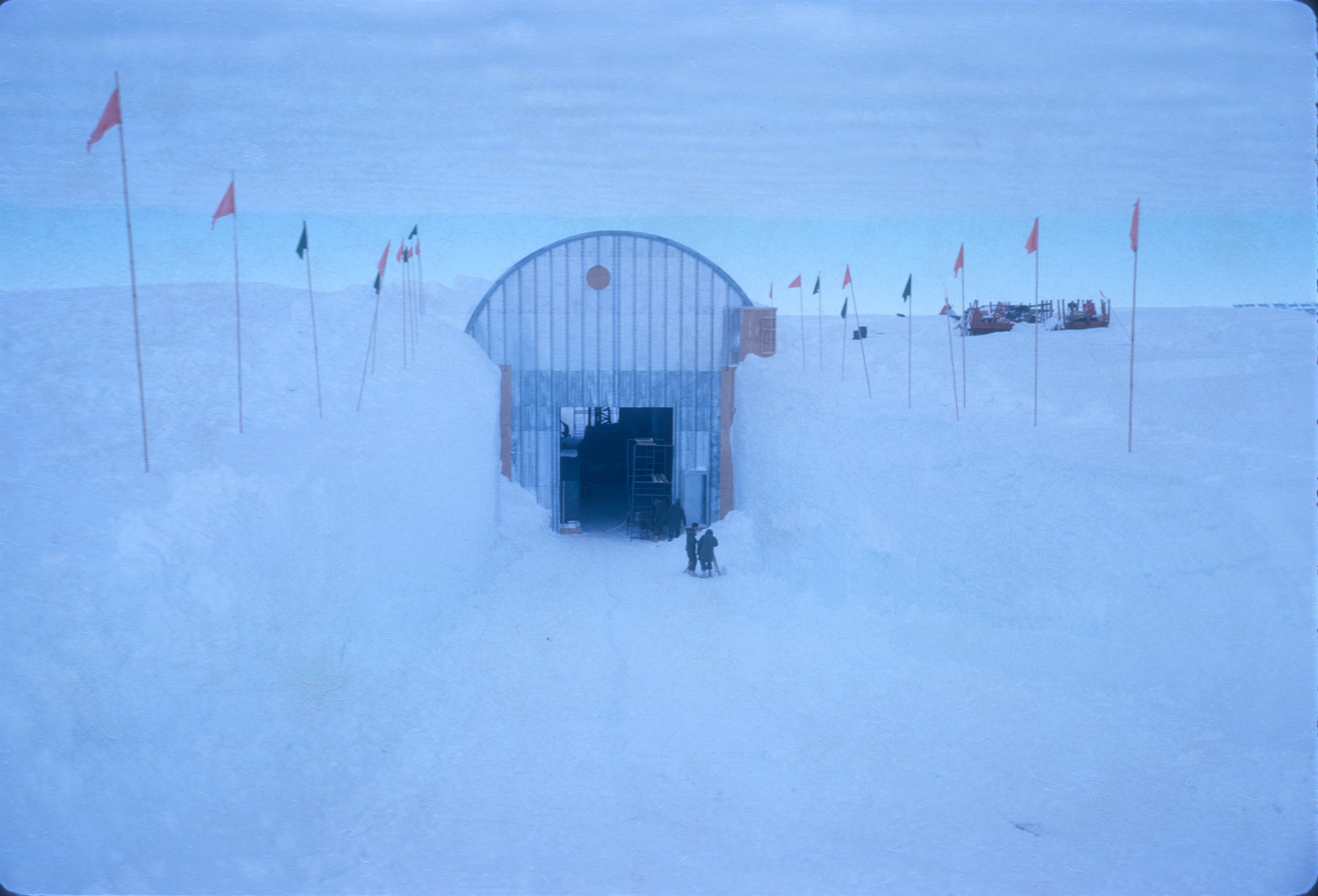
Above: Snow was used to cover Camp Century to help hide it. Courtesy of Robert Weiss.
A startling example of Cold War excess and the enormous resources the US government was prepared to throw at truly bizarre concepts.
Almost science fiction in its scope, Camp Century would not even be thought up today.
Except that’s not the end of the story… not even close.
The future
While Project Iceworm’s soldiers were busy with their atomic reactor and psychological experiments, they were also doing something else… They were digging.
Nobody in the army realised how important this would be. But scientists on the base drilled a hole through nearly 1,390 meters of ice and reached Greenland’s ancient surface. They took samples which sat in jars, untouched for decades.
Geoscientist Paul Bierman discovered the frozen samples in Denmark. He, and several of his colleagues at the University of Vermont studied them and came to a disturbing conclusion that would have ramifications for the entire world.
Greenland’s ice sheet was younger than we had thought. Far, far younger.
Until 2019 scientists had thought the enormous ice sheet was several millions years old.
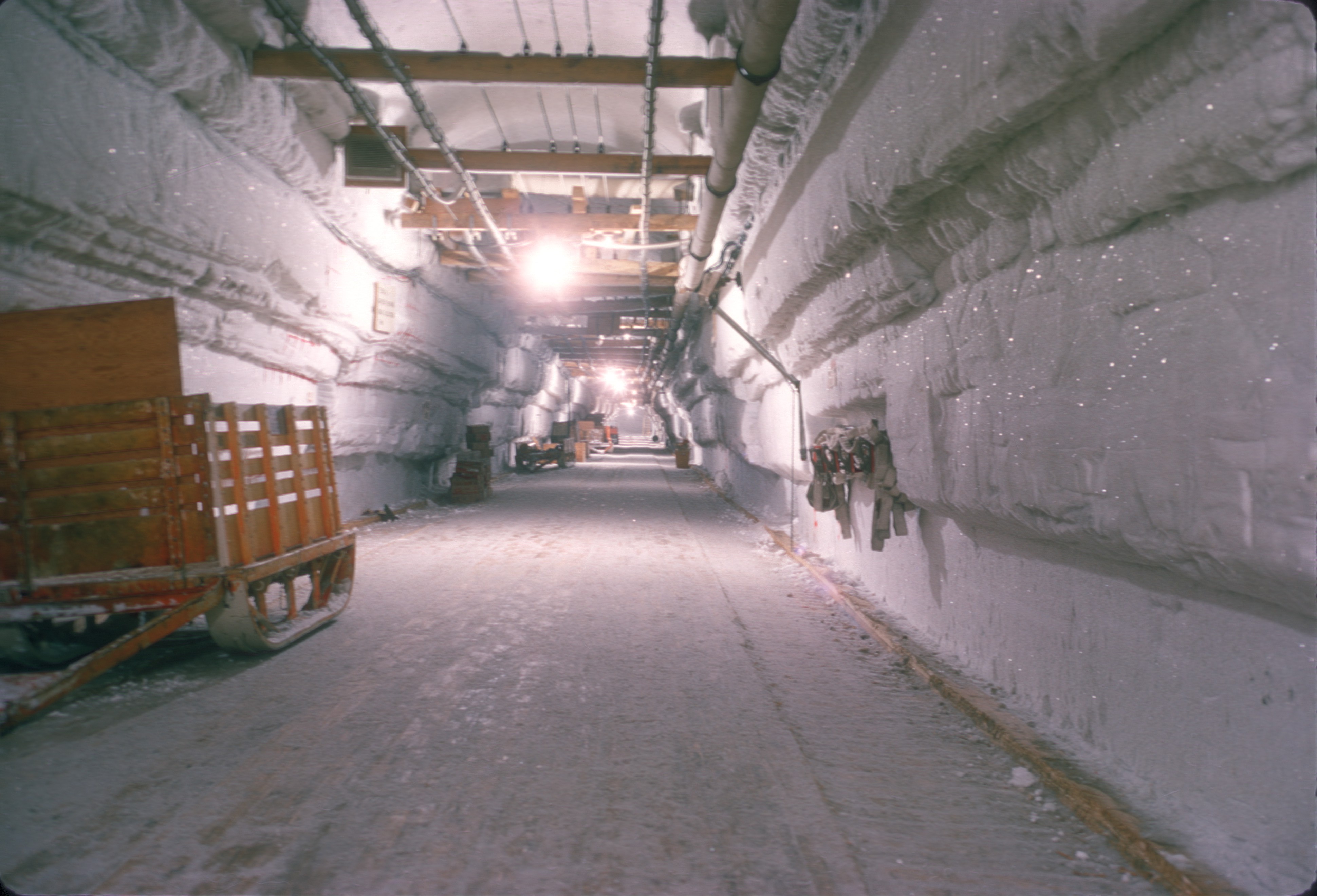
Above: Inside the tunnels of Camp Century. Courtesy of Robert Weiss.
Thanks to the soil samples Bierman and his team found bits of leaves, twigs and insects that dated back just 400,000 years ago. They would not be in the soil samples unless the ice sheet was not there. This means that less than half a millennia ago Greenland was completely ice-free.
That is not a comforting fact.
Greenland is more susceptible to changes in Earth’s climate than we had thought. Meaning that if worldwide temperatures rose again and the climate warmed, more of this enormous ice sheet would melt into the ocean, causing sea levels to rise and potentially disturbing the vitally important North Atlantic current.
The Greenland Ice Sheet contains approximately 2.9 million cubic kilometers of ice. This is equivalent to roughly 8% of all the Earth's fresh water. If all of it melted, it could cause a global sea level rise of about 7.4 meters.
Camp Century was lost, decades ago. The ice moved and crushed the steel and wood left behind. Nature reclaimed it.
Until an accident brought it back to the surface.
NASA scientist Chad Greene flew over Greenland in April of 2024 to map ice sheets and estimate future sea level rise and to his great surprise their radar picked something else up… The distinct tunnels of Camp Century. Crushed and distorted, but still very much there.
As strange as it sounds, this is only the most recent example of Camp Century being “rediscovered”.
The camp is constantly being discovered and lost again under the ice.
In 2016 the camp was discovered again.
That time, however, the Danish learned something disturbing.
In 1967 when the Americans abandoned the base, they left toxic and radioactive waste behind. At the time the Danes allowed it to be left, deeming it to be below levels that were considered alarming.
But now, the ice is melting faster than anticipated. And that toxic waste, once thought to be buried forever under the ice, could resurface.
“They found out that in about 70 or maybe 100 years time there will be melt water coming down. To expose the buried waste in Camp Century. And this is biological waste, it's chemical waste, and it's radiological waste. And some of this waste will be kind of mobilized by the melt water and could be carried out into the ocean. And this sparked a huge debate in Denmark,” said Nielsen.
This debate centered around the question of responsibility. Who should clean up the toxic waste? The Americans who dumped it? The Danish government who allowed it? Or Greenland itself, which now has more sovereignty as a nation than it did in the 60s.
The site is still buried under tens of meters of ice, and conditions are remote and dangerous.
A cleanup operation would require massive logistics, Ice drilling, and Nuclear waste handling.
It is currently not technically or economically feasible to safely remove the waste, yet inaction could become dangerous over time.
All parties have time to figure it out, but it is somewhat of a ticking clock hanging over Greenland.
All these decades later Camp Century stands, albeit in ruins,simultaneously a wild fantasy, a frightening reality, and still a tantilising mystery.
“There's still a lot of things we don't know about Project iceworm, such as who exactly was it that was behind it and how was it discussed and received in different parts of the army and also into political circles,” said Nielsen.
Unanticipated by everyone involved, its legacy is now deeply rooted in the planet’s own uncertain future.
Additional footage and images courtesy of Robert Weiss and Department of Defense, National Technical Information Service.
We welcome you sharing our content to inspire others, but please be nice and play by our rules.
